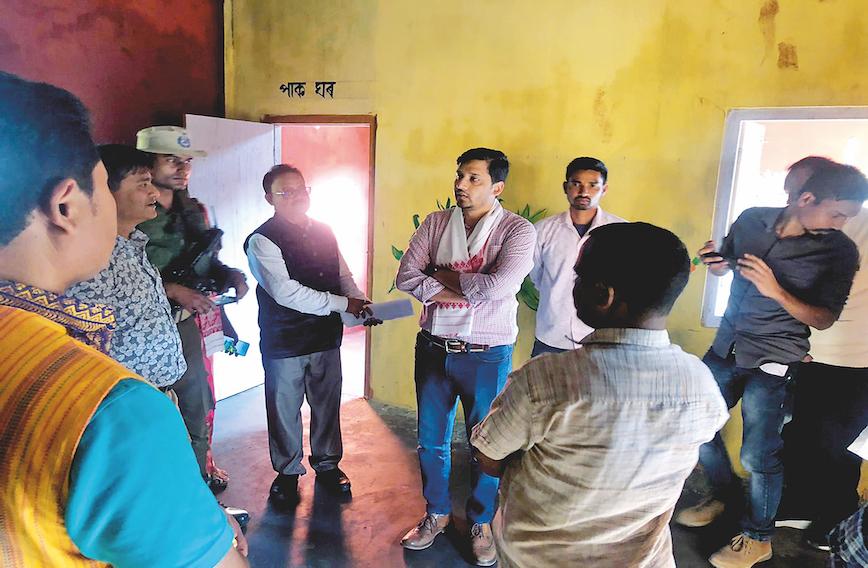
Deputy Commissioner Aayush Garg checks out an anganwadi
Baksa sets a record with 196 anganwadis in 3 months
Civil Society News, New Delhi
BAKSA has long been accustomed to its obscurity. The pace of development in this northwestern district of Assam has been painfully slow. There aren’t the schools, colleges, hospitals and enterprises that its population of around a million needs for life to improve.
It became a full-fledged district in 2003 after the setting up of an autonomous council for Bodo tribal people in a deal to end their insurgency. But subsequently, not much has changed though 18 years have passed.
Imagine the surprise then when the Assam chief minister, Himanta Biswa Sarma, made it a point to visit Baksa in November last year to inaugurate 107 newly built anganwadis or playschools.
In all, 196 anganwadis have come up in just three months and they meet the pre-school needs of 5,600 children in Baksa. It is an achievement that breaks all records in easy-paced Assam. Each anganwadi has a large central room, a kitchen and toilet. There are water and electricity connections.
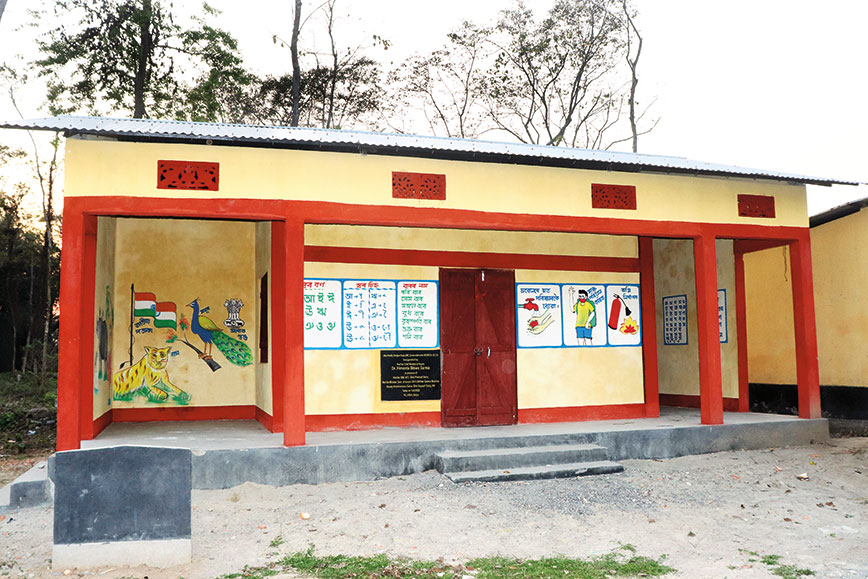 The anganwadis are bright and cheerful structures with a central room for the children and learning material on the walls
The anganwadis are bright and cheerful structures with a central room for the children and learning material on the walls
Interestingly, the anganwadis have been built under MGNREGA or the rural employment guarantee scheme. The project has generated 56,000 days of work and disbursed Rs 12 crore, primarily to impoverished and unemployed tea garden workers.
Making all this happen is the somewhat low-key and guardedly enthusiastic Aayush Garg, 32, who is the deputy commissioner of Baksa district.
Garg has been in the IAS for six years and it is the first time that he is in a DC’s post, but he has set a scorching pace and been inventive with his ideas for the district.
Perhaps that has something to do with the transition he has made. He is a qualified chartered accountant who worked with PricewaterhouseCoopers (PwC) and then ITC before deciding that he needed to do more with his life. He was planning to apply for a management course in one of the Ivy League universities and then pivoted to appear instead for the civil services.
As an auditor in the private sector, Garg was cynical about government. He wasn’t convinced that development reached the people who needed it. Since his job required him to travel, he thought he knew enough about India.
But just studying for the civil services examination widened his horizons. There was more to the country he actually knew about. And once in government he came to better understand the needs of the people and the processes of development. The realization grew that even the little that reached people made a serious difference to their lives. He was no longer merely the chartered accountant and auditor that he had been trained to be. He acquired insights he could never have had before. He began seeing the grey and finding meaning in it.
“Sure, serving the nation has to be the main reason for joining the services. To be honest, status and social esteem are also involved. But the biggest change that happens in an officer’s mind is when you actually go and see things on the ground. Your conception of fundamental rights, the Constitution, what the nation is or what our poverty really is changes,” says Garg.
“When you talk to people, you realize that their expectations out of life are really, really simple,” says Garg. “You have to just empathize with them and look at it from their perspective. You might say, okay, this is a small project, of about two lakh rupees. What will it yield? Or how will it impact anything? But at the village level, just the inflow of that two lakh rupees will make a world of difference.”
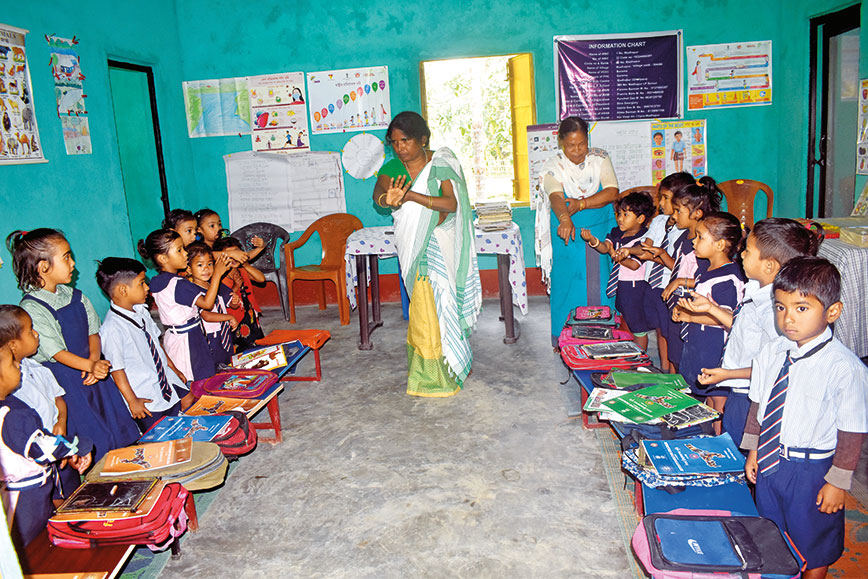
The idea of building anganwadis in Baksa emerged from a meeting to review work done under the aspirational districts programme of the the NITI Aayog. It was shocking that of the 2,000 anganwadis in Baksa, just about 400 had buildings of their own. The rest had mushroomed here and there.
“I think the trigger point was just that aspirational district review meeting. In some of the aspirational district parameters, we were doing really well. So we got a congratulatory grant from the NITI Aayog to the tune of around Rs 7 crore as a discretionary fund with which the district was free to do what it wanted,” says Garg.
“We were actually deciding on the allocations of that Rs 7 crore when the Social Welfare Department proposed the construction of 10 or 15 anganwadi centres. The budget was coming to around Rs 90 lakh. Essentially, they were eroding one-seventh of the Rs 7 crore for setting up 10 anganwadi centres that didn’t count for much out of 2,000 anganwadi centres. I said it was a waste of money that wouldn’t do anything for our score as an aspirational district either,” Garg recalls.
The need for anganwadis, however, interested him deeply. He then began thinking of bringing in a company with corporate social responsibility (CSR) funds. But then two issues surfaced: a CSR partner would always look for publicity and the second was that the anganwadis were government assets, which would require maintenance over the years. If they came through a company it would be difficult to predict what could happen later. Government staff would have no sense of ownership and responsibility.
It was around then, give or take a few days, that the project director of the District Rural Development Agency responsible for MGNREGA planning called to say that targets had to be set for using funds and he needed time for a meeting. The thought came to Garg that the anganwadis could be built using MGNREGA money.
“It suddenly struck me that we had a solution for our problem. You know, just one plus one equals two,” says Garg. “Why don’t we club the two issues, I thought to myself.” Garg spoke to the village development officers (VDOs) and persuaded the Village Council Development Committees (VCDCs) in the district to recognize anganwadi construction as MGNREGA work.
There are 102 VCDCs in Baksa and it was decided to do a pilot project of two anganwadis per VCDC. That would make it 204 anganwadis, but the number was whittled down to 196.
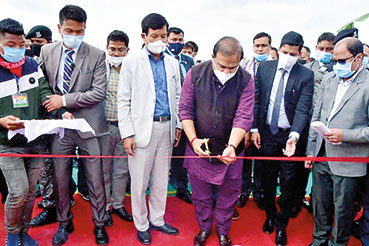 |
| Chief Minister Himanta Biswa Sarma inaugurating the anganwadis |
The project was launched on August 15, 2021 with the stiff and somewhat unrealistic deadline of one month for having all the anganwadis up. With an extension of the deadline, 156 anganwadis were completed by November 14, Children’s Day.
As word got around and the chief minister’s office got to hear of it, the CM asked to know more. Some 20 days later, Sarma visited Baksa and inaugurated 107 anganwadis at one go.
As Garg set out to improve the anganwadis, he was struck by how far removed they were from playschools in cities.
He thought about the expensive and well-equipped playschool his niece went to in Ludhiana. The anganwadis of Baksa, by comparison, had virtually nothing going for them, not even proper buildings.
Baksa is in the heart of tribal Bodoland and borders Bhutan. It is all of 2,189.8 km from Ludhiana — Google will tell you. But it could also be next door, depending on who you are and how you deal with distance.
Garg decided to bridge the gap by bringing a bit of Ludhiana to Baksa. If his district’s anganwadis couldn’t equal the standards of privately-run urban playschools, couldn’t they at least aspire to resemble them in some ways?
Garg got in touch with the principal of his niece’s Ludhiana playschool for ideas and pictures of her classrooms so that he could try something similar in Baksa. She was happy to help.
“She sent me all the fancy drawings on the wall, the maths, some interesting ideas with tyres and all recycled materials here and there. And, in addition, we also roped in the Piramal Trust here. The trust is actively working with us for a couple of other initiatives. So, their regional manager in Guwahati was in touch with me,” recalls Garg.
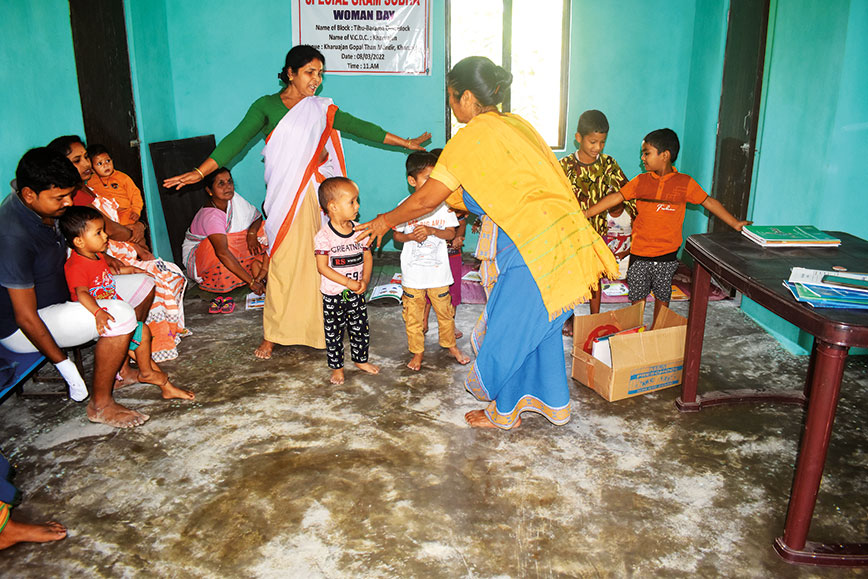
He also had friends who had given up jobs in companies to work with NGOs. He decided to tap them for help and test his ideas on them.
“There is this organization, ILSS India — basically leaders for the social sector. I have a really close friend there by the name of Pratyush Rawal. I called up Pratyush and told him what I wanted to do. He connected me to another senior person in Piramal Trust. The trust said that they would be willing to contribute. They sent an entire team that went around to our sites. They saw the local requirement, including doing things in the Bodo language,” says Garg.
“They came up with some really interesting designs. They gave me a playbook of around 35 to 40 pages, detailing all the ideas that could be done,” recalls Garg, happy that he had reached out to them. “And we shared them with our engineers. We just called a very simple meeting. We said this is what we want, can you guys do it? And I think five out of the six engineers agreed. They said it was very much doable. No extra budget was required, just very slight modifications would do the trick.”
The Social Welfare Department has its own standard design for the construction of an anganwadi centre. A small number of anganwadis are constructed every year. The estimate for constructing such an anganwadi is Rs 5.96 lakh. There is one large room, which is supposed to be the common area for the children, a kitchen and a bathroom.
“These are the three standard components and all the 200-odd centres that we’ve constructed conform to the same drawing. So, this is the basic infrastructure which we are providing. And in addition, fortunately enough, we have a high -focus scheme here, the Jal Jeevan Mission. We are providing every household with a water connection. I brought our anganwadis under the scheme. There is, similarly, a power connection,” says Garg.
Distant as Baksa is, ideas from all over India have converged to make the anganwadis a reality. Some influences have been over the years. As Garg immersed himself in the project, he remembered hearing a lecture on BALA by Kabir Vajpeyi while he was under training at the IAS academy. BALA stands for ‘building as learning aids’ and involves using architecture to enhance the learning experience of the child.
It could involve lowering a window to let in more light into a classroom or putting numbers and letters into window grills or using doors to teach angles. It encourages teachers to be inventive in using the physical environment.
Listening to Vajpeyi as a trainee at the academy, Garg had thought the BALA concept was far-fetched but here in rural Baksa he could see that the concepts Vajpeyi expounded made eminent sense as low-cost ways of transforming his anganwadis. He got hold of a BALA booklet.
The BALA programme is really meant for schools above the level of the anganwadi, but it is inspirational and a trigger for fresh ideas in settings for children.
“We didn’t involve Mr Vajpeyi and his team,” says Garg. “But we were influenced by their ideas. We would love it if he were to visit Baksa and see what we have done.”
Comments
-

Vertul Singh - May 6, 2022, 11:28 a.m.
Excellent initiative. Mr. Garg should involve Mr. Vajpeyi in long term education projects also .
-

prabhakar ayer - April 12, 2022, 4:52 p.m.
Article on Baksa Anganwadi very inspiring.
-

Dr. Digambar Narzary - April 11, 2022, 11:46 a.m.
The personal commitment to build better lives for children of most un-reach Baksa district has make possible -- I admire his vision..



